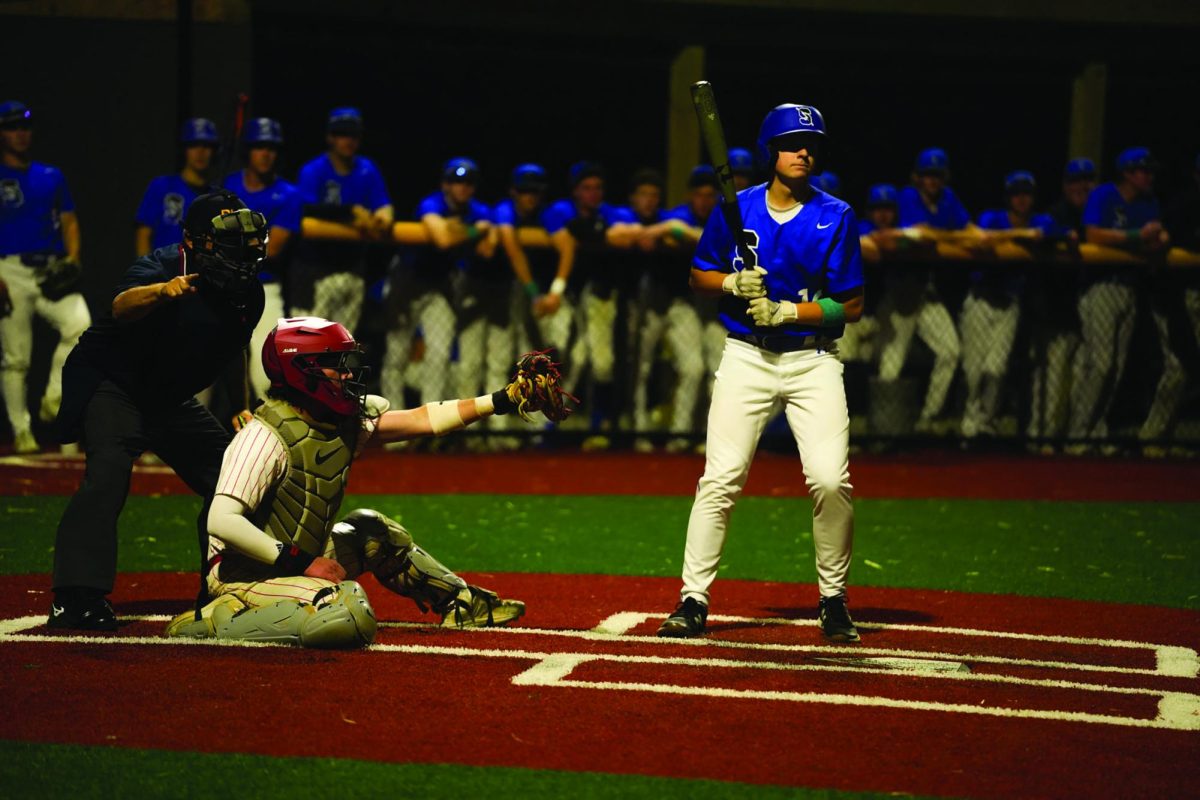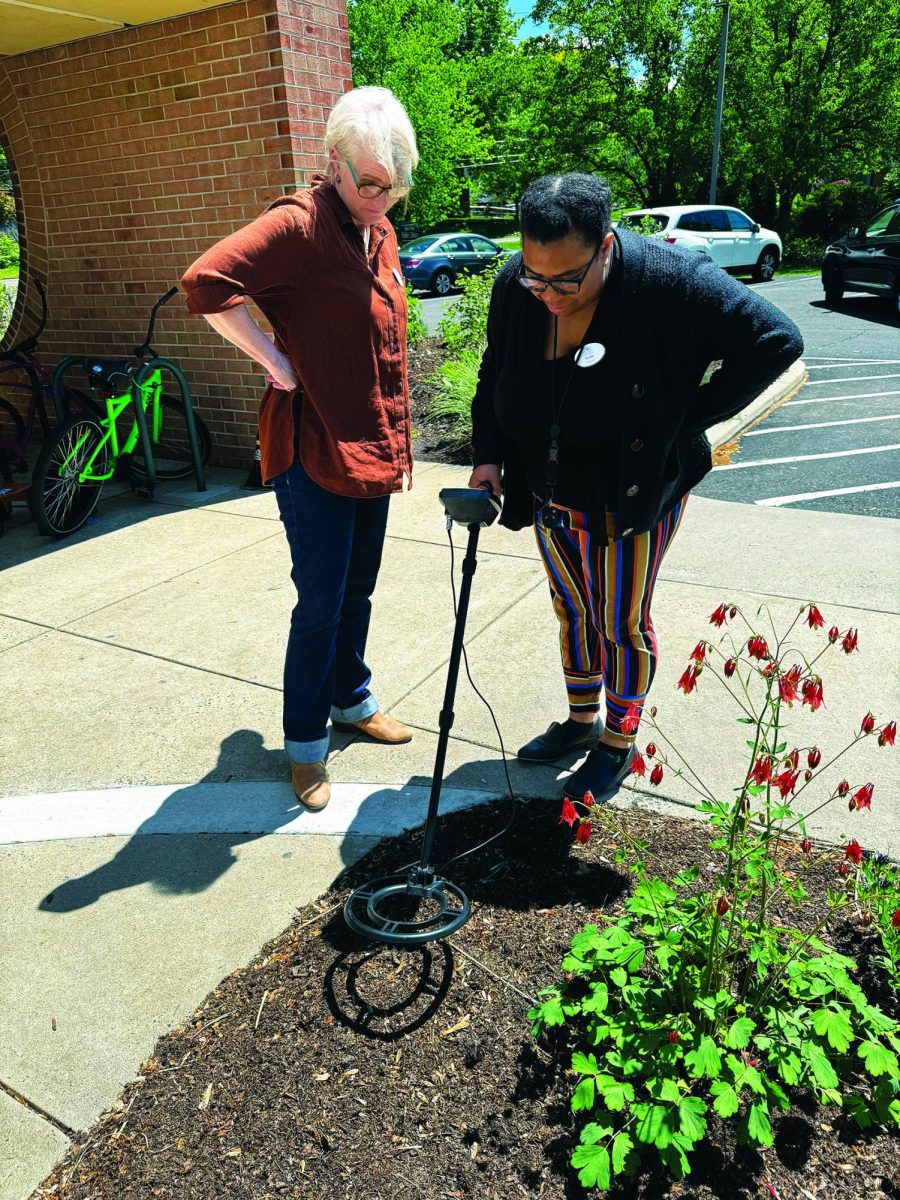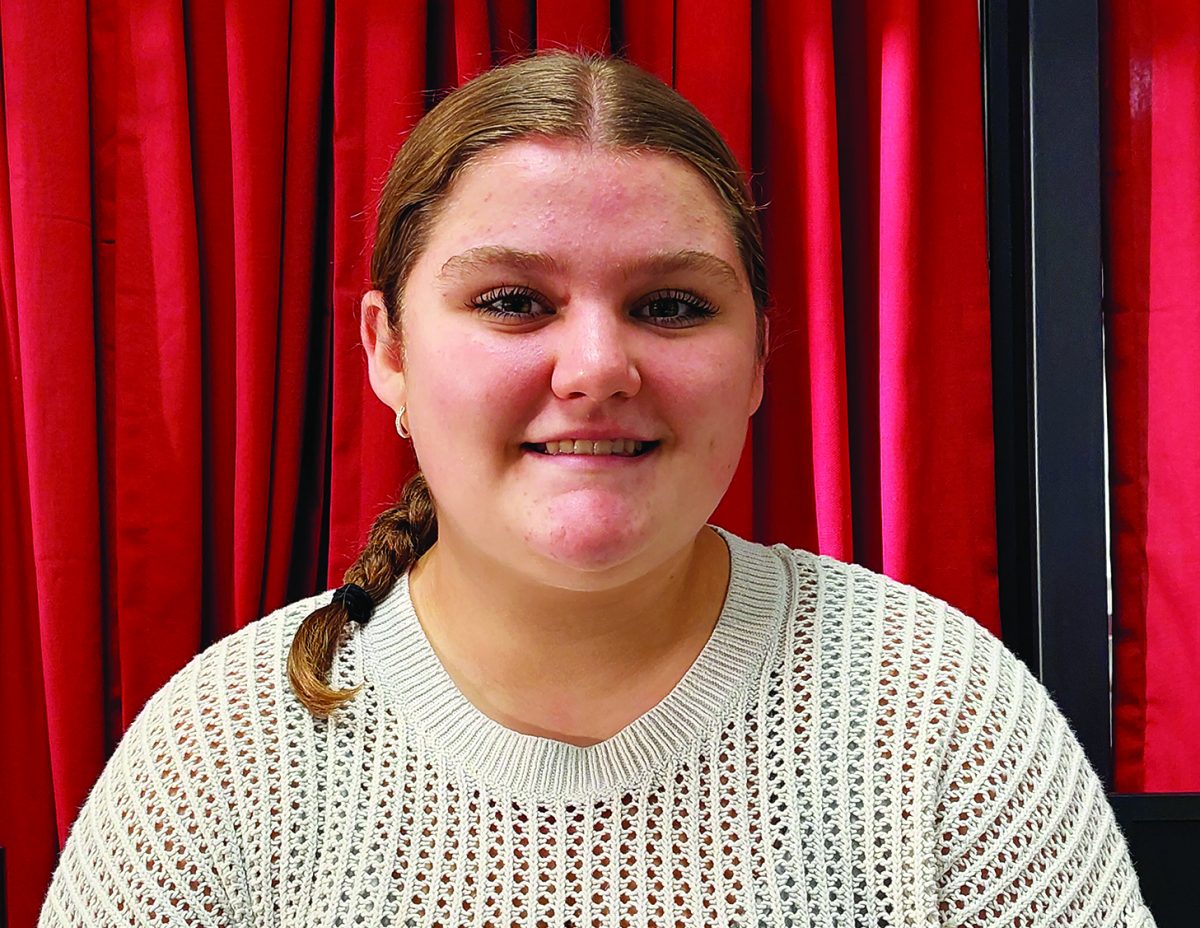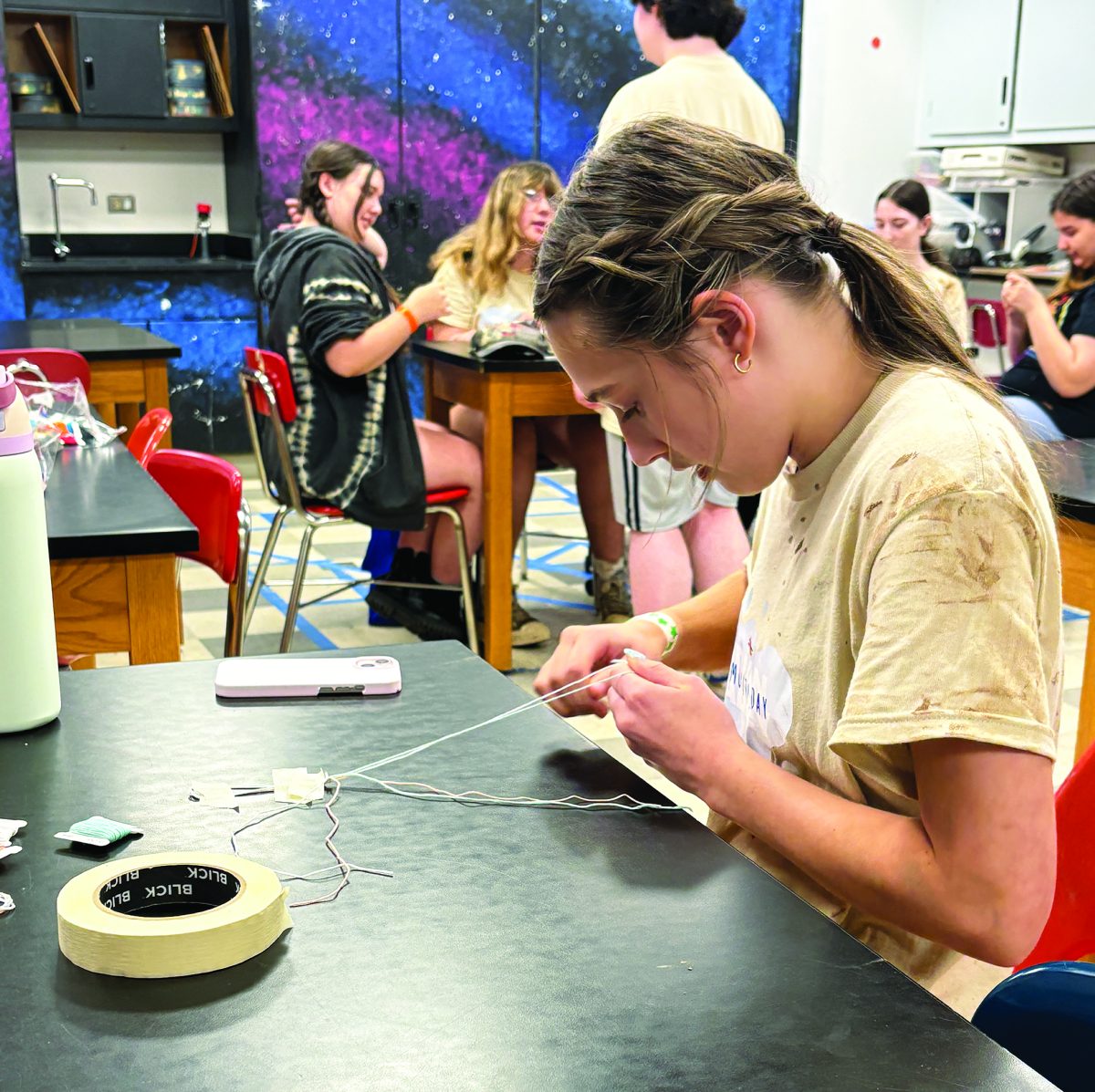Due to the filming of George Floyd’s death and worldwide protests against police brutality, former police officer Derek Chauvin was tried for from March 29 to April 20 in Minnesota.
On May 25, 2020, Floyd was arrested after allegedly using a counterfeit $20 bill at a store in Minneapolis. During his arrest, Floyd was brought to the ground and restrained with Chauvin’s knee on his neck for 9 minutes and 29 seconds. Floyd died on the scene.
Derek Chauvin’s trial began with the prosecution calling witnesses to the stand. Many witnesses recounted what it was like to view the death of Floyd, bringing this first-hand aspect to the jury.
According to 17-year-old and witness Darnella Fraizer in her testimony, who also filmed the video of Floyd’s death, as Floyd said “I can’t breath” and called out for his mother, he was “terrified”, “suffering”, and seemed like he “knew it was over for him.”
61-year-old and witness Charles McMillian said in his testimony that he told Floyd to cooperate with the police because “once the police get the cuffs on you, you can’t win.”
According to McMillian, Floyd, already detained and pressed to the ground, said, “I can’t.”
Along with McMillian, many of the witnesses who testified on behalf of the prosecution became emotional recounting the experience of watching Floyd die.
Freshman Nate Eryadin said that the murder of Floyd was “disgusting.”
“I probably won’t ever forget the first time I saw that video,” Eryadin said.
The prosecution also called to the stand cardiologist Dr. Jonathan Rich. According to Dr. Rich in his testimony, Floyd died from cardiopulmonary arrest caused by the prolonged pressure of Chauvin’s knee on Floyd’s neck. Cardiopulmonary arrest is the sudden stop of heart functioning and therefore breathing. A very common symptom is unconsciousness.
In his testimony during the trial, Dr. Rich also said that Floyd’s death was “absolutely preventable” and could have been prevented if the officers did chest compressions when Floyd became unconscious. Just four minutes after Chauvin put his knee onto Floyd’s neck, Floyd was unconscious.
Minneapolis Police Department Chief Medaria Arradondo testified on behalf of the prosecution. In an interview with The Guardian, former DeKalb County, Georgia police chief and public safety director Cedric Alexander said that it’s “very rare” to see a police chief testify on behalf of the prosecution or defense.
Arradondo said that when Floyd was handcuffed and was “clearly” no longer resisting or conscious, continuing to apply a high level of force is in “no way, shape or form by policy, is not part of our training, and is certainly not part of our ethics or values.”
One of the main arguments of the defense was that Floyd had drugs in his system at the time of the arrest, although Hennepin County chief medical examiner Andrew Baker, who also performed Floyd’s official autopsy, testified later in the week that remnants of drugs were not found in Floyd’s stomach.
The defense did find fragments of pills in Floyd’s car that contained Floyd’s DNA. The defense continued to argue that one of the causes of Floyd’s death, along with vehicle exhaust from the police car and pre-existing heart conditions, was a drug overdose specifically from the highly addictive narcotic fentanyl.
According to Floyd’s girlfriend Courteney Ross in her testimony at the trial, both she and Floyd struggled with substance abuse.
The prosecution rebutted this argument by saying that an autopsy revealed that there were relatively low amounts of fentanyl and methamphetamine in Floyd’s system during his arrest, amounts which are not enough to cause someone to overdose and die.
Forensic toxicologist Daniel Isenschmid said in his testimony that Floyd had 11 nanograms per millimeter (ng/mm) of fentanyl in his blood. According to Isenschmid, a set of 2,345 people pulled over for driving under the influence of fentanyl reportedly had an average of 9.59 ng/mm of fentanyl in their blood with 592 people having over 11 ng/mm of fentanyl in their blood. All of the people in this report were alive.
Emergency medical physician Dr. Bill Smock also said in his testimony that Floyd did not have symptoms of a fentanyl overdose.
Sophomore Helen Spigel said that the death of Floyd brought out emotions of “anger, frustration, sadness, and grieving,” among the public.
According to Spigel, her views that Floyd’s death is unjust have been “strengthened by the trial.”
After 45 witnesses testified spanning over three weeks of active trial proceedings, the jury began to deliberate their verdict on April 19 from 4-8 p.m. After an additional six hours on April 20, the jury came to the verdict that Chauvin was guilty of second-degree unintentional murder, third-degree murder and second-degree manslaughter.
Following the announcement of the verdict, many people celebrated in the streets near the Hennepin County Government Center and other cities nationwide. Many of these same people were ready to protest the verdict if it returned as innocent.
Spigel and freshman Sonia Dharmani said that they were “relieved” when they heard the guilty verdict.
Floyd’s death last May has caused the largest amount of civil rights protests in America in recent decades.
“I am so glad the efforts of countless people have paid off,” Dharmani said.
A concern for many is that without the video of Floyd’s murder that Chauvin would not have been found guilty. Originally after Floyd’s murder, the police report filed his death as being caused by natural causes.
Spigel said that she doesn’t think that the trial would have resulted in a guilty verdict had Floyd’s death not been filmed.
“We hear names on the internet of those who are killed by police but don’t get justice,” Spigel said.
Eraydin said that if Floyd’s murder didn’t have the publicity from the video, that he doubts that there would “even be a trial unfortunately as many cases like this are swept under the rug.”
Eraydin said that he was “ridiculously nervous” when waiting for the verdict, but was happy when he heard that it was guilty. However, Eraydin said that he is worried that people now think that the fight against “injustice and equality” is over.
“One man being charged doesn’t even cover a gram of the injustice of America,” Eryadin said.
According to a report done by Phillip Stinson at the Henry H. Wallace Police Crime Database, between 2005 and Floyd’s murder in May of 2020, only five non-federal law enforcement officers were convicted of, convictions that were not overturned, on-duty shootings resulting in the death of another person.
A study by the National Public Radio (NPR) revealed that since 2015, 135 Black men and women were shot and killed by police officers whom at least 75% identified as white. Overall, in America, while only making up 13% of the population, Black people accounted for almost 24% of these fatal shootings since 2015.
Eighth grader Eli Tevald said that Floyd may never truly get justice for his murder.
Tevald said that Chauvin being convicted is a good first step, but that you can’t get justice for someone who was unjustly murdered.
“If we want to keep his [Floyd’s] memory alive and we don’t want his death to be in vain, we have to continue to focus on Black lives,” Spiegel said. “We have to make sure that this is not a trend or fad.”
Eryadin said that he hopes for “justice for every person of color who has been murdered by police or as an act of racial bias and hate crime, and eventually police reform” but that he thinks that these hopes are unrealistic due to the “sheer amount of cases like Floyd’s” in a country that “boasts about equality and justice.”
In August, three other officers involved in the murder of Floyd will be tried in court.
Derek Chauvin faces trial for death of George Floyd
After his arrest due to the use of excessive force on African American George Floyd, former police officer Derek Chauvin faced a trial for Floyd’s murder at Hennepin County Government Center in Minneapolis, Minnesota. The video of Floyd’s death while being arrested went viral and protests broke out.
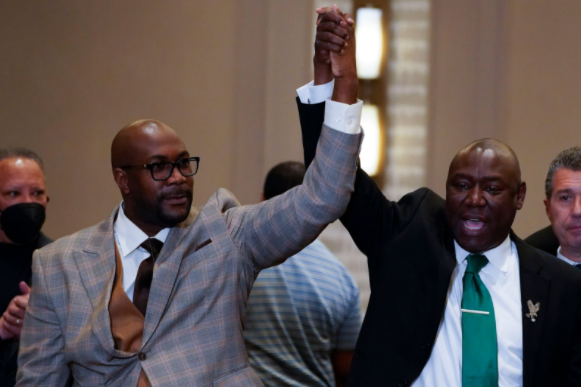
**A sigh of relief…***Following the announcement that former police officer Derek Chauvin has been found guilty for the murder of African American George Floyd, brother of Floyd Philonise Floyd (left) and Attorney Ben Crump (right) celebrate Chauvin’s conviction on April 20 in Minneapolis, Minnesota. Many other Americans gathered on the streets throughout the country to rejoice in the guilty verdicts.*
*Photo by Julio Cortez*
0
More to Discover
About the Contributor
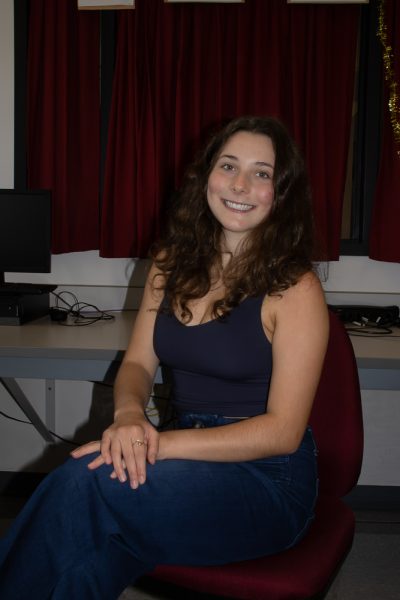
Claudia Elwell, Co-Editor-In-Chief

